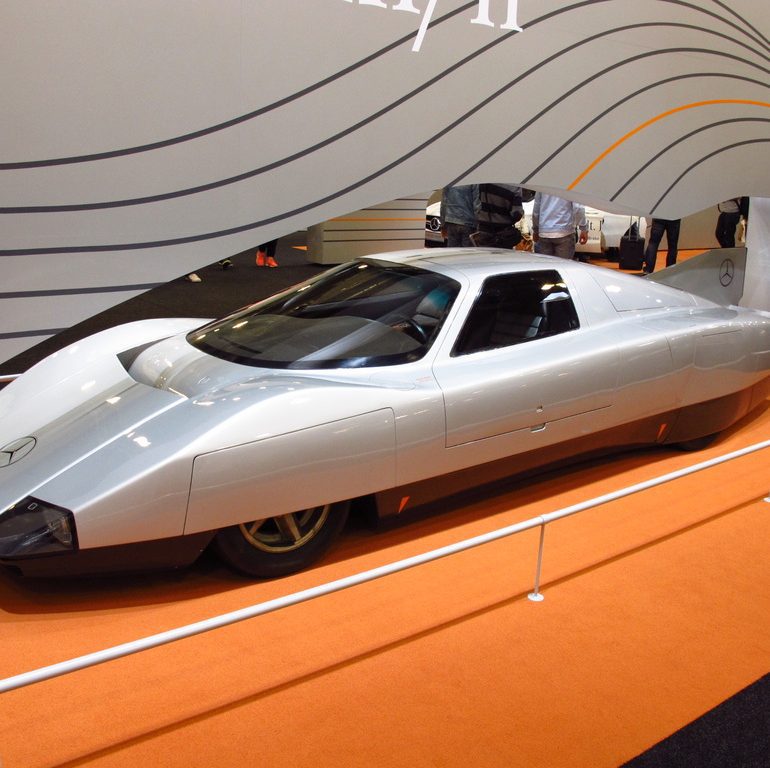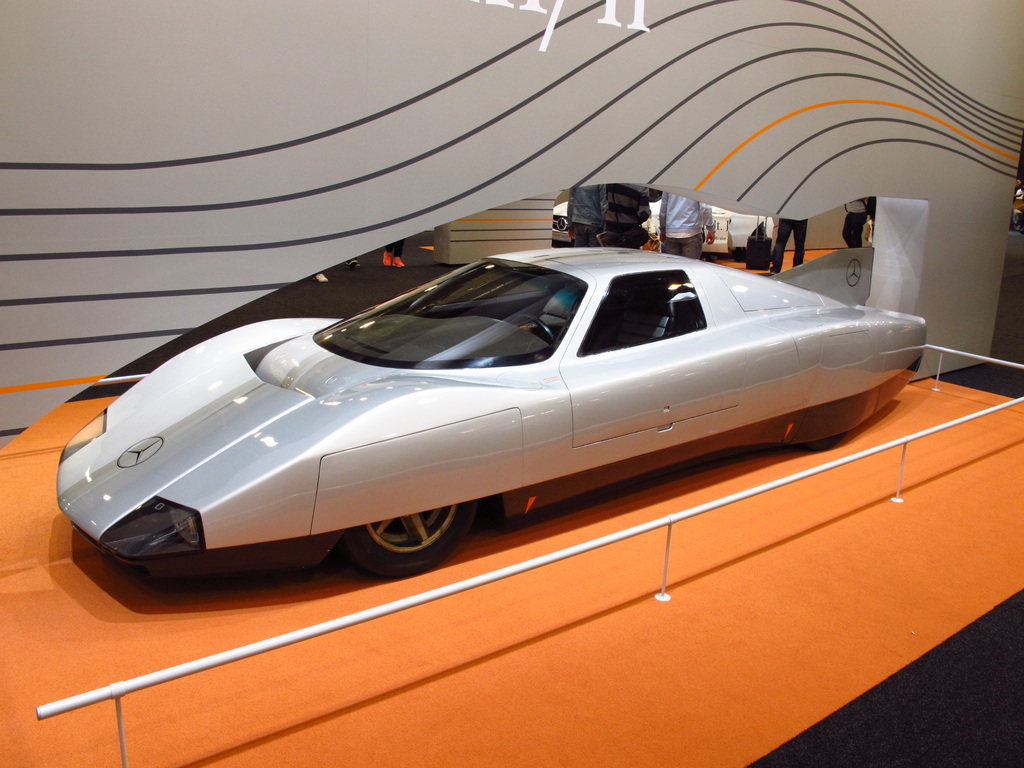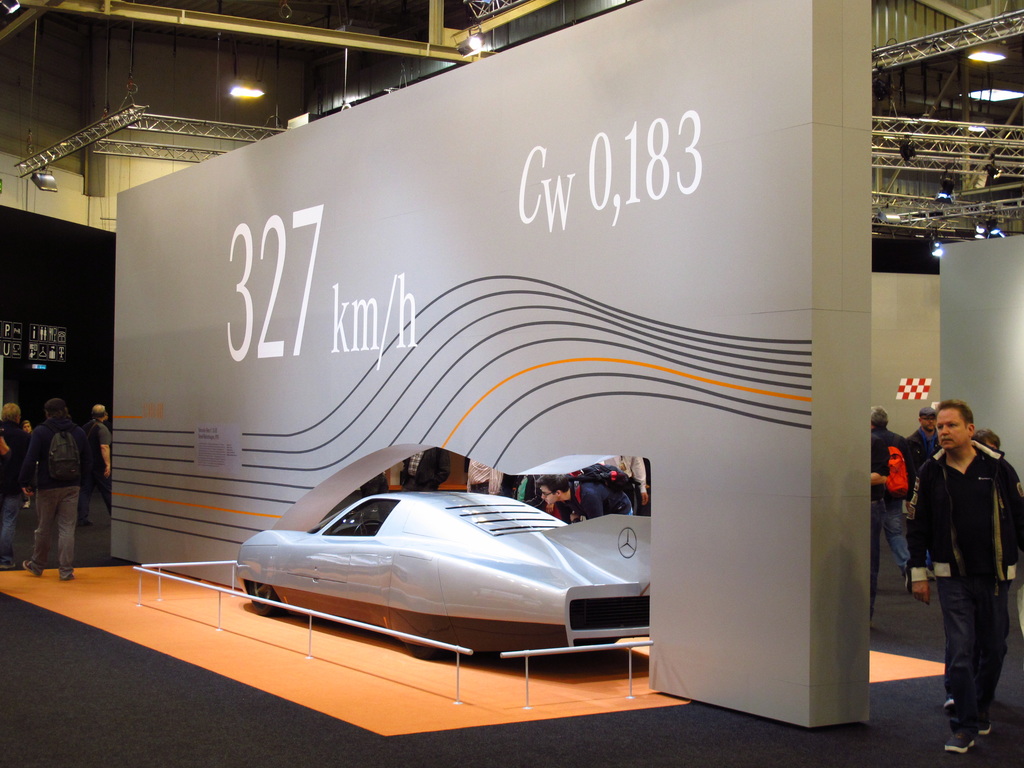1977 Mercedes-Benz C111-III
The compact wedge in bright orange, a shade internally called weissherbst, expressed power, elegance and speed. C 111 was the designation of the futuristic study displayed by Mercedes-Benz in September 1969 at the Frankfurt International Motor Show (IAA). The car broke new ground in terms of both engineering and design. The C 111 was to serve as a research car for testing Wankel engines, new suspension components for wider tires through to racing tires and plastic bodywork components. In addition, the C 111 was used to improve the aerodynamic efficiency of sporty road-going cars.
With the success of the C111 and it’s sparsely modified C 111-II first displayed at the Geneva Motor Show, developers took the C111 to new heights. This time, they did not create a design study for a road-going sports car but a thoroughbred racing car for the sole purpose of establishing speed records: the C 111-III. The new car was built in 1977; it was narrower than the first C 111, had a longer wheelbase and good aerodynamic properties, thanks to complete streamlining and rear airfoils. In 1978, the C 111-III lined up at the start in Nardo.
A diesel engine growled under the silver-painted plastic bodywork. While this engine had been derived from a production unit, it had been tuned to develop 230 hp and gave the streamlined car a top speed well over 300 km/h. With this Silver Arrow, Mercedes-Benz established nine world records in the late 1970s.
Story by Mercedes-Benz, edited by Supercars.net






